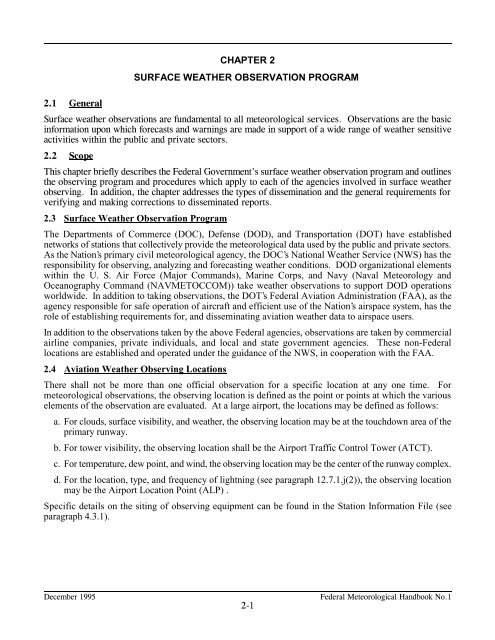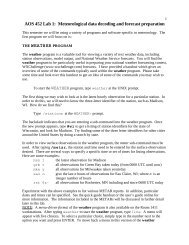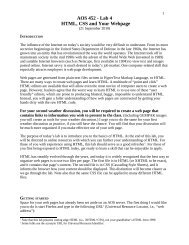Federal Meteorological Handbook No. 1 - Marrella
Federal Meteorological Handbook No. 1 - Marrella
Federal Meteorological Handbook No. 1 - Marrella
You also want an ePaper? Increase the reach of your titles
YUMPU automatically turns print PDFs into web optimized ePapers that Google loves.
CHAPTER 2<br />
SURFACE WEATHER OBSERVATION PROGRAM<br />
��� �������<br />
�<br />
��������������������������������������������������������������������������������������������������������<br />
������������������������������������������������������������������������������������������������������<br />
�������������������������������������������������<br />
�<br />
��� �����<br />
�<br />
��������������������������������������������������������������������������������������������������������<br />
����������������������������������������������������������������������������������������������������<br />
����������������������������������������������������������������������������������������������������������<br />
���������������������������������������������������������<br />
�<br />
2.3 Surface Weather Observation Program<br />
The Departments of Commerce (DOC), Defense (DOD), and Transportation (DOT) have established<br />
networks of stations that collectively provide the meteorological data used by the public and private sectors.<br />
As the Nation’s primary civil meteorological agency, the DOC’s National Weather Service (NWS) has the<br />
responsibility for observing, analyzing and forecasting weather conditions. DOD organizational elements<br />
within the U. S. Air Force (Major Commands), Marine Corps, and Navy (Naval Meteorology and<br />
Oceanography Command (NAVMETOCCOM)) take weather observations to support DOD operations<br />
worldwide. In addition to taking observations, the DOT’s <strong>Federal</strong> Aviation Administration (FAA), as the<br />
agency responsible for safe operation of aircraft and efficient use of the Nation’s airspace system, has the<br />
role of establishing requirements for, and disseminating aviation weather data to airspace users.<br />
In addition to the observations taken by the above <strong>Federal</strong> agencies, observations are taken by commercial<br />
airline companies, private individuals, and local and state government agencies. These non-<strong>Federal</strong><br />
locations are established and operated under the guidance of the NWS, in cooperation with the FAA.<br />
2.4 Aviation Weather Observing Locations<br />
There shall not be more than one official observation for a specific location at any one time. For<br />
meteorological observations, the observing location is defined as the point or points at which the various<br />
elements of the observation are evaluated. At a large airport, the locations may be defined as follows:<br />
a. For clouds, surface visibility, and weather, the observing location may be at the touchdown area of the<br />
primary runway.<br />
b. For tower visibility, the observing location shall be the Airport Traffic Control Tower (ATCT).<br />
c. For temperature, dew point, and wind, the observing location may be the center of the runway complex.<br />
d. For the location, type, and frequency of lightning (see paragraph 12.7.1.j(2)), the observing location<br />
may be the Airport Location Point (ALP) .<br />
Specific details on the siting of observing equipment can be found in the Station Information File (see<br />
paragraph 4.3.1).<br />
������������� ������������������������������������<br />
���





